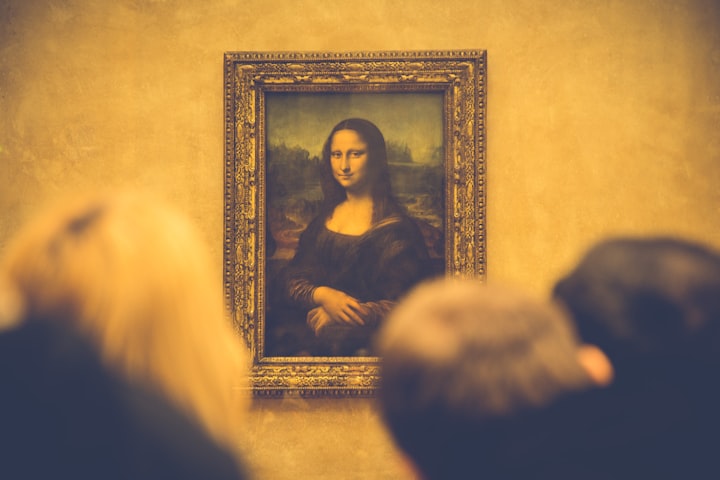Why is the Mona Lisa so famous?
Why is the Mona Lisa so famous?

Vincenzo Peruggia took a painting off the wall and slid down the back stairs of the Louvre on August 21, 1911, as dawn broke over Paris. He was just a few steps away from freedom when he ran into a two-pronged issue: There were approaching footsteps as the door was locked. The "Mona Lisa" by Leonardo da Vinci was tucked under Peruggia's arm. It is currently regarded as the most famous painting in the world. But how did it get to where it is today? The portrait is said to have been started by Leonardo in 1503, when a Florentine businessman asked for a portrait of his wife, Lisa Gherardini. Leonardo worked on the painting for more than a decade, but when he died, it was not finished. Leonardo da Vinci was a pioneer in a number of artistic techniques thanks to his ground-breaking research on human optics over the course of his lifetime. The "Mona Lisa" depicts some of them. Utilizing "air point of view," he made pictures at more noteworthy distances hazier, creating the deception of significant profundity. Additionally, he used the technique known as "sfumato" to create subtle color gradations that softened the edges of the forms he depicted. Although all of this is striking, is it sufficient to make the "Mona Lisa" the most well-known painting in the world? It is regarded as an exceptional Renaissance portrait by many academics, but it is only one of many. Additionally, great artwork can be found throughout history. In point of fact, most of the factors that contributed to the "Mona Lisa's" rise to worldwide fame were outside of the canvas. After Leonardo's death, King François the First of France purchased the painting and began displaying it. After that, in 1550, the well-known biography of Italian Renaissance artists, including Leonardo, was written by the Italian scholar Giorgio Vasari. The book, which was translated and sold a lot, described the "Mona Lisa" as if it were a dreamlike representation of life. The "Mona Lisa" evolved into one of the French Royal Collection's most coveted pieces over time. It was initially displayed for the general public in the Louvre Museum before hanging in Napoleon's bedroom. The once-private treasures of the deposed aristocracy were a popular attraction for tourists there. A number of European academics in the 1800s increased the "Mona Lisa"'s popularity by focusing heavily on its allure. Alfred Dumesnil stated in 1854 that the smile on the Mona Lisa evoked a "treacherous attraction." After a year, Théophile Gautier composed of her "taunting lips" and "look encouraging obscure delights." In addition, Walter Pater described the Mona Lisa in 1869 as the epitome of timeless femininity. The portrait was a well-known piece in one of the world's most famous museums by the 20th century. However, the "Mona Lisa" was not yet well-known. It was Peruggia's 1911 heist that assisted it with soaring to uncommon distinction. It wasn't entirely out of the question that Peruggia would be imprisoned inside the Louvre because he had been contracted to create protective cases for the museum. Additionally, Peruggia was fortunate in that a worker who saw him in the stairwell simply assisted Peruggia in opening the door and allowed him to leave for the day. The theft made news around the world. The empty space where the "Mona Lisa" used to be displayed drew a crowd of people. Because Peruggia had worked at the Louvre, the police interviewed him, but they never considered him a suspect. In the meantime, they questioned Pablo Picasso regarding his connection to a previous robbery at the Louvre, but in the end, they let him go. After smuggling the "Mona Lisa" to Italy and making arrangements to sell it to a Florentine art dealer, Peruggia kept the painting in a false bottom suitcase for two years. Peruggia viewed himself as an Italian patriot who was returning the work of an old master. However, he was immediately detained, not celebrated as such. The "Mona Lisa" was put back on display in front of large crowds after the mystery was solved, and newspapers celebrated the success of the story. In the next many years, reasonable craftsman Marcel Duchamp derided it; It was pursued by Nazi art thieves; About it, Nat King Cole sang; and it was attacked by museum visitors with teacups, paint, stones, and paintbrushes. Over 500 years after its creation — eyebrows and eyelashes since a long time ago blurred — the "Mona Lisa" is safeguarded by an impenetrable, tremor safe case. It now stands as a reminder of how we create and maintain celebrity, rather than as an outstanding Renaissance portrait.
Click Here to learn about the rise and fall of the medieval Islamic empire






Comments
There are no comments for this story
Be the first to respond and start the conversation.